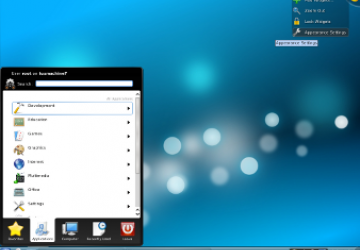Spotlight on Linux: Slackware Linux 13.1

People sometimes ask which distribution to try if they want to learn how Linux works. Common answers are Gentoo, Arch, or Debian. However, I disagree. Each of these distros teach users their particular brand of Linux. There's only one truly pure Linux, and that is Slackware.
Slackware is the oldest surviving Linux distribution. In its early years, Patrick Volkerdin rolled up a kernel, init, libraries, desktop, and applications to make Linux easier for users. And that's still what he is doing today. He doesn't change anything, he doesn't customize anything. Every component is exactly how the original developers intended. For example, users get a vanilla kernel and default desktop configuration.
Version 13.1 was released May 25 with Linux 2.6.33.4 and KDE 4.4.3. Slackware ships with other desktop options, such as Xfce 4.6.1, and lots of handy software. As expected, it comes with Web browsers, office applications, multimedia software, personal communication tools, image management, and more. Slack usually includes Java, but most other browser plugins and multimedia codecs are left to the user to install. 13.1 still uses HAL and udev in order to grant users access to removable media without root privileges or sudo. Along those same lines, this release also brings ConsoleKit and PolicyKit to allow even more convenience in running the system without elevated permissions. This release should be easy to use for users of any experience.
Slackware's original package management system - or software installer and uninstaller - neither resolves dependencies nor downloads from online repositories. However, some third-party attempts came along to address this and one, slackpkg, has recently been added to Slackware to bring the same capabilities as APT on Debian and Debian-based distributions. However, if you install the full range of packages on the Slackware install DVD, there isn't much extra on official mirrors. That's why some recommend the community repository hosted by slackbuilds.org. Between slackpkg and slackbuilds, Slackware has moved into the 21st century of software management.
Once upon a time Slackware was a favorite because of its hardware configuration method. In the tradition of keeping it simple, it had one file that users needed to edit (for most purposes). Most drivers were listed and users just uncommented whichever was used by their hardware. But even that isn't necessary anymore. Just like any other distro today, most hardware is automagically detected and configured.
Finally, the installer is another area of Slackware that gets some negative comments from time to time. It isn't very pretty by today's standards and it is keyboard driven, but it isn't difficult to use. It asks a few questions during the process in a similar manner as other Linux installers. Perhaps the most difficult aspect is the need to partition your disk prior to beginning the install setup. The installer disk comes with fdisk and cfdisk for this purpose.
So, all in all, besides the partitioning requirement and the lack of multimedia support, Slackware is just as up-to-date and easy-to-use as any Linux distribution. Like a split personality, today's Slackware is steeped in tradition yet surprisingly modern.
Advantages:
1. True Linux experience
2. High Performance
3. Extremely stable
Disadvantages:
1. Off-putting partitioning and installer
2. No live CD/DVD
3. Still uses Lilo for boot management
4. Lacks multimedia codecs










